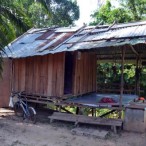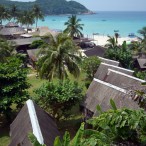A little over a year ago I was lucky enough to visit Myanmar during the early stages of its reintroduction to the outside world. Shortly afterward, I wrote an article on things to do in Yangon, its main city. I listed some tidbits of info on a few of the favorite things I did during my time there. Activities which I thought others would also enjoy, but also weren’t completely obvious, such as visiting famous pagodas. The other day, I had a realization. Over 10,000 people had read that particular article. That’s absurd. Never did I think it would become such a hit. Google has shown it some love and placed it on the front page for a number of search results including “things to do in Yangon,” hence its popularity.

I’d assume the items in the list were things that many would have discovered eventually regardless of whether or not they had read about it on my blog. There is almost certainly similar info in a guidebook or another website; however, the post has definitely affected the decisions of at least a few travelers, many of which have thanked me personally for the recommendations. In turn, I can’t help but wonder if my little post has had some sort of effect on the city’s tourism. In particular, 19th street. I remember finding it from the word of mouth of a local we met as we wandered through the market. He adamantly reproached the Lonely Planet guide book for having no idea where the best place to get a BBQ and a beer was after nightfall in his city of Yangon. Sure enough, the street was great and exactly as promised while a quick check confirmed that the guidebook was devoid of any mention of it. I felt I should let future travelers know about the street and threw it in my post, never thinking twice.
I’m obviously not alone in this. Travel writers have been discovering hidden gems since forever (Marco Polo) and writing about them for others to experience. At the beginning of my trip I read a debauchery filled “Do Travel Writers Go to Hell?” by Thomas Kohnstamm, a Lonely Planet guidebook writer. While the stories could sometimes border on Max Tucker-esque, perhaps my most lasting memory from the book was his description of a small town adjacent to a national park in Brazil. Hardly anyone knew much about the town other than locals and there was no readily available information on. It was quite the find and he loved the place, which led to some mixed feelings about how to present it in the guidebook. He wrestled with the thought of revealing its secret to the travel world. Would it bring the masses and would it have a negative effect on the locations aura? He had already visited locations along the way which had been the next big thing and all had succumbed to the inevitable creep of commercialization and commodification. He didn’t want to be responsible for any of that, but he also had a job to do. In the end, he settled on a short mention of it and left out the true feelings he felt for the place, fluffy feelings that if put in a guidebook would surely encourage many more to make the journey.

So who are travel writers to have a say on some location’s future and what effect, if any, do they really have? Bali has definitely seen an influx of older women after Eat, Pray, Love so they obviously do have an effect, but is that a bad thing? Maybe its not good or bad. It’s just the way it is. Sometimes we want a place to sit in time unchanged, staying exactly as we found and left it, but that’s not always the way of things. We love to share and tell others about our experiences as we reflect upon them and, for better or worse, that inevitably leads some to follow in our footsteps. Just as we followed.





Hey Phil – really nice article! This is something I wrestle with all the time. Do we give up our secrets and potentially “ruin” a place? Or does sharing the secret finds do more good ($ to the locals) than bad?
That is the question Lina. How to proceed?